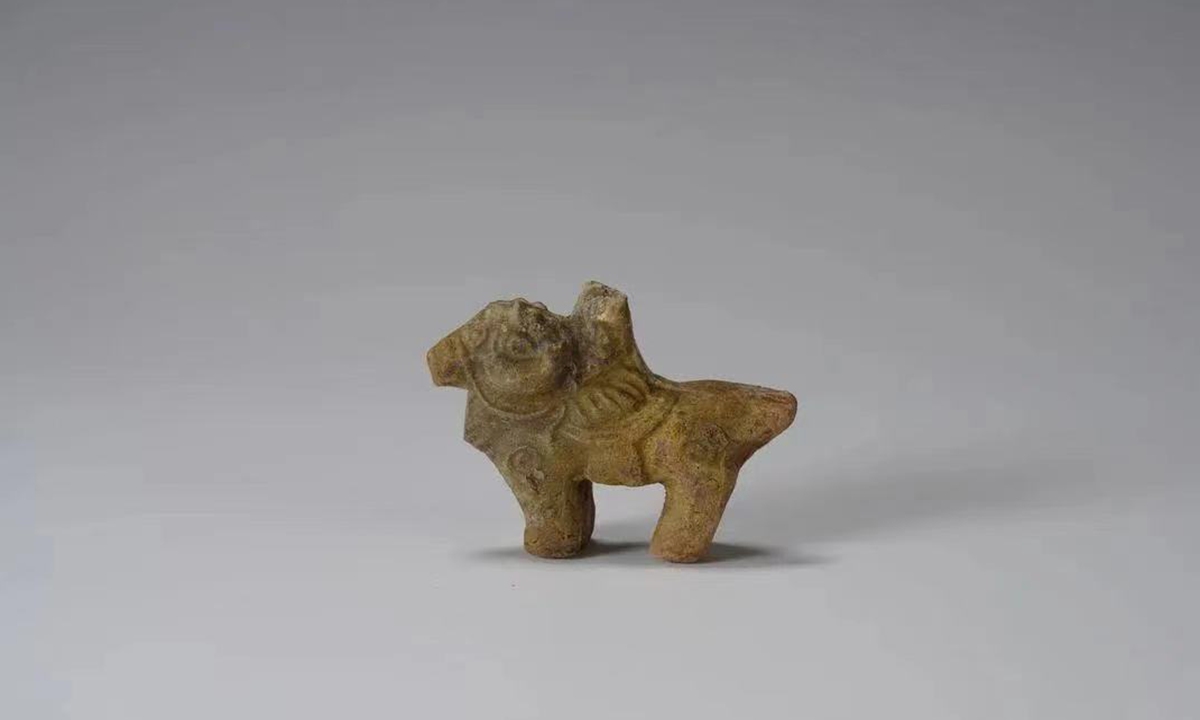Large-scale public cemetery for Qin people discovered in Shaanxi

One of the relics unearthed from the tombs Photo: Courtesy of Xianyang Institute of Cultural Relics and Archaeology
A large-scale cemetery containing more than 200 tombs was recently discovered in Xianyang, Northwest China's Shaanxi Province. The tomb cluster was confirmed to be a burial place for the people of the Qin Dynasty (221BC-206BC).
Archaeologists found a total of 237 ancient tombs, excavated in Xianyang's Jiantan village, dated from the late Warring States Period (475BC-221BC) to the Qin period. According to the tombs' design, archaeologists were able to determine the area was used as a public cemetery.
Besides the prolific Qin tombs, 26 other tombs were also unearthed. They belong to other historical periods such as the Han (206BC-AD220), Tang (618-907), Northern Song (960-1127) and Ming (1368-1644) dynasties.
Seven additional tombs belong to the last imperial dynasty of China, the Qing (1644-1911), archaeologist Jia Zhengyu told the Global Times, noting that it was fascinating to see how this area has been "historically recognized by ancient Chinese people as a burial place."
"Although most of these tombs belong to the Qin dynasty, we still can see the continuity of Chinese burial traditions from the site," Jia told the Global Times.
Archaeologists noticed that the Qin tombs in the eastern and western parts of the site were very similar in terms of configuration and the types of burial objects unearthed from them.
Archaeologist Xue Ruiming told the Global Times that this arrangement reflects that a "planning system for burials" may have already been implemented by ancient Chinese. Xue also said that the discovery "reminds people of the Chinese belief in treating the deceased as if they were alive."
Other than tombs, a total of 878 cultural relics were also unearthed from the site. The funerary objects unearthed in the eastern areas are mainly artifacts made of clay, copper and iron. Those objects were commonly used by ancient people in everyday lives.
"As the burial objects were mainly practical in nature, this led us to be even more confident that the area was a public cemetery for common people," said Zhao Xuyang, deputy director of the Institute of Cultural Relics and Archaeology of Xianyang.
Although the site was not seen as high-grade, some burial objects discovered in the western part of the ancient cemetery still reveal the "tastes of ordinary people," Jia told the Global Times.
In addition to a copper mirror and a jade seal, 10 glazed pottery sheep sculptures were unearthed from the ruins. Such tiny sculptures were vividly engraved with patterns that were commonly seen on Chinese silk brocades. Zhao said that exquisite objects like these are rarely seen in tombs from the same period.
"The site is like a melting pot of different Chinese burial traditions. It also reveals the evolution of Chinese burial customs," Jia remarked.
Prior to the 2023 discovery, in 1995 and 2022, another 805 tombs were consecutively discovered in the local Ta'er Po area that is close to Xiantan village. Around 95 percent of the Ta'er Po tombs were also from the late Warring States and Qin periods.
The three discoveries confirm the "eastern suburb of Xianyang city was indeed an ancient cemetery," said Zhao, adding that by comparing tombs from the three excavations, researchers can better investigate their exact time periods.
Related articles
-
 View of Shenyang in NE China's Liaoning
View of Shenyang in NE China's LiaoningMore
-
 'Encore Dunhuang' resumes to facilitate tourism recovery
'Encore Dunhuang' resumes to facilitate tourism recoveryMore
-
 Marco Polo commemorations deepen Sino-Italian cultural exchanges
Marco Polo commemorations deepen Sino-Italian cultural exchangesMore
-
 A song of sand
A song of sandMore
-
 Cultural relics exhibition held at Confucius Museum in China's Shandong
Cultural relics exhibition held at Confucius Museum in China's ShandongMore
-
 Ancient Jin Dynasty tombs with murals unearthed in Shanxi
Ancient Jin Dynasty tombs with murals unearthed in ShanxiMore
